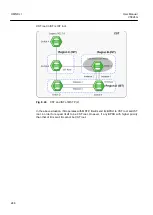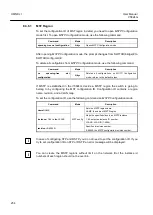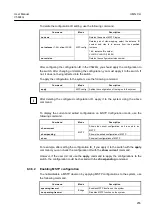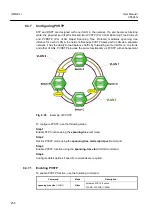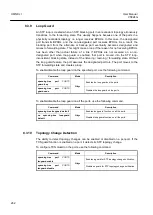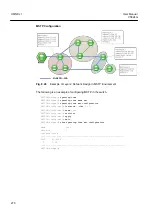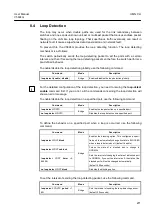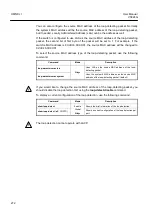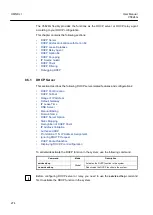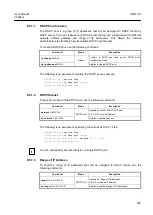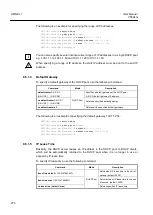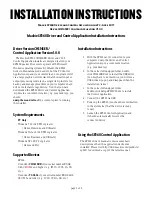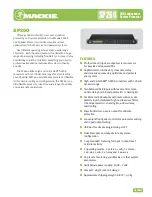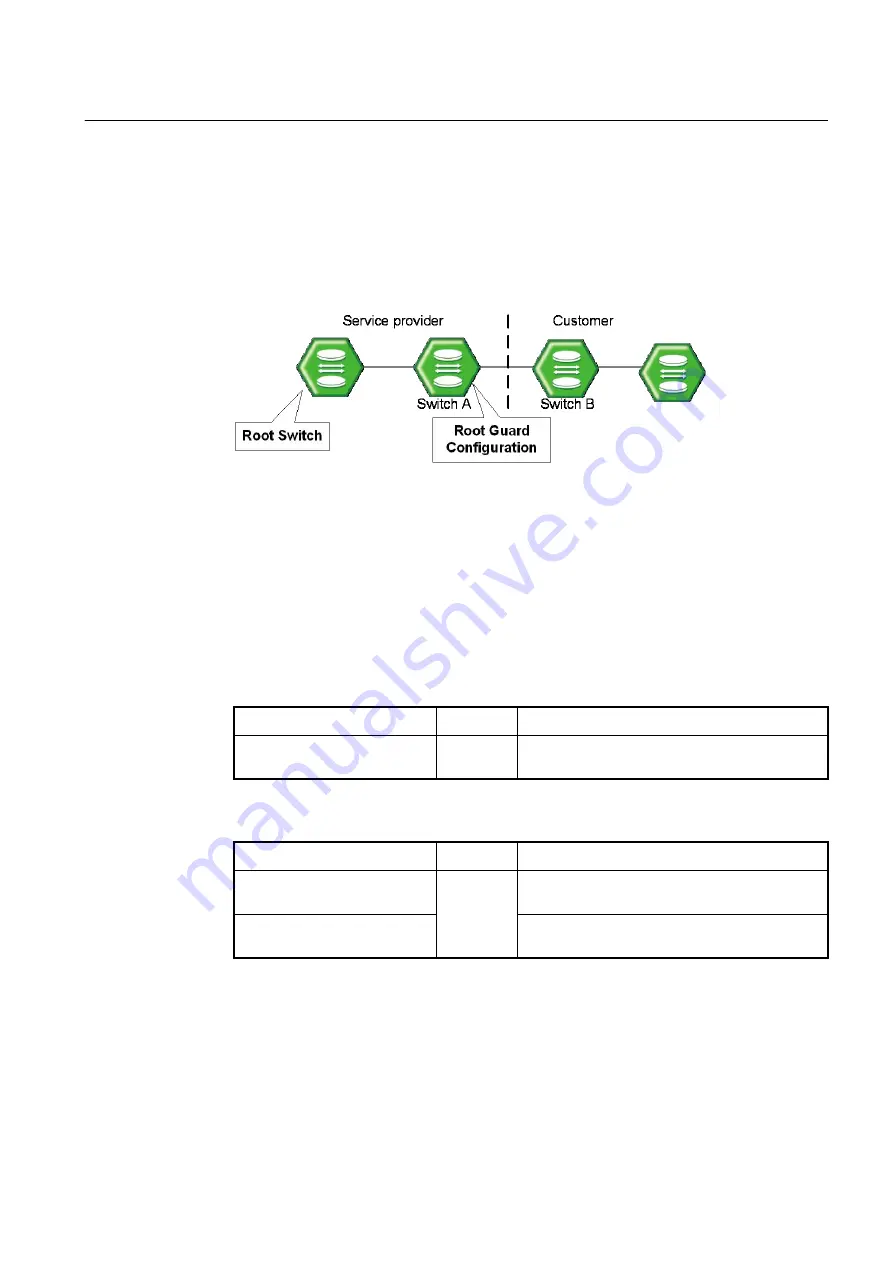
User Manual
UMN:CLI
V5824G
261
8.3.8
Root Guard
The standard STP does not allow the administrator to enforce the position of the root
bridge, as any bridge in the network with lower bridge ID will take the role of the root
bridge. Root guard feature is designed to provide a way to enforce the root bridge
placement in the network. Even if the administrator sets the root bridge priority to zero in
an effort to secure the root bridge position, there is still no guarantee against bridge with
priority zero and a lower MAC address.
Fig. 8.26
Root Guard
Software-based bridge applications launched on PCs or other switches connected by a
customer to a service-provider network can be elected as root switches. If the priority of
bridge B is zero or any value lower than that of the root bridge, device B will be elected as
a root bridge for this VLAN. As a result, network topology could be changed. This may
lead to sub-optimal switching. But, by configuring root guard on switch A, no switches
behind the port connecting to switch A can be elected as a root for the service provider
’
s
switch network. In which case, switch A will block the port connecting switch B.
To configure Root-Guard, use the following command.
Command
Mode
Description
spanning-tree
port
PORTS
guard root
Bridge
Configures Root Guard on the network.
To delete a configured Root-Guard of specified port, use the following command.
Command
Mode
Description
spanning-tree
port
PORTS
guard none
Bridge
Disables Root Guard function.
no spanning-tree port
PORTS
guard
Deletes a configured Root Guard, returns to default
configurations.


